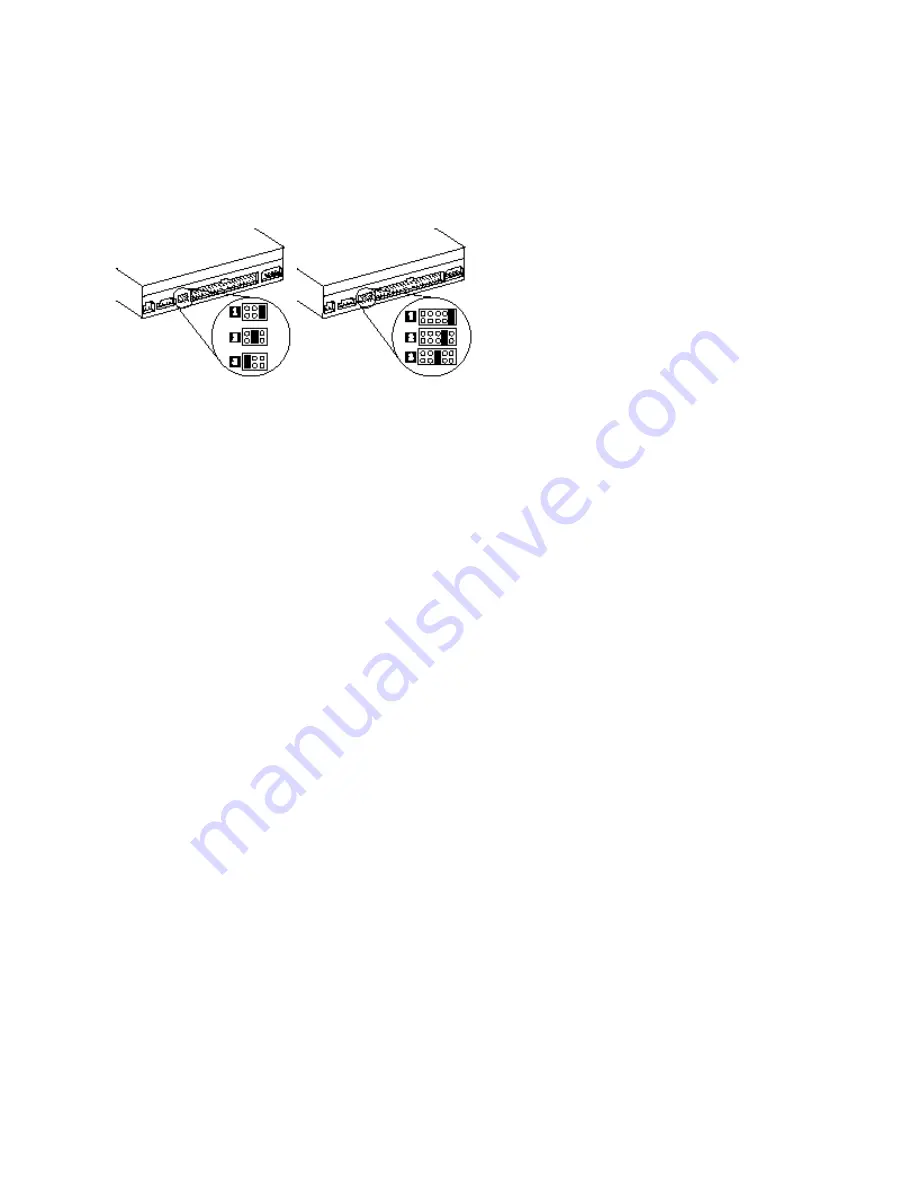
Some non-IBM computers support the cable-select setting, where the position of the device on the cable
determines whether a device is master or slave. See the documentation that comes with your computer to
determine if your system supports this setting.
Setting the Configuration Jumper:
Configure the CD-ROM drive by placing one jumper over a set of configuration pins. If your CD-ROM drive
has three pairs of pins, refer to the illustration above left to set the jumper. If your drive has five pairs of pins,
disregard the first two pairs, as they are for factory use only. The jumper setting positions for the last three
pairs of pins are shown in the illustration, above right.
If you are configuring the drive as master, set the jumper to the master 1 device setting. (This is how the
drive is set when it is shipped.) If there is a second device on the IDE port, check that the device is
configured as slave.
If you are configuring the drive as slave, set the jumper to the slave 2 device setting. Check that the other
device on the IDE
port is configured as master (or master-with-slave-present).
If you are configuring the drive as cable-select, set the jumper to the cable-select 3 device setting. If there is
another device on the IDE port, check that the device is also configured for cable-select.
If you need assistance in setting the configuration jumpers or need additional information about the hard disk
drive on the same IDE port as the CD-ROM drive, refer to Hard Disk Drive Manufacturers.
Mounting the Drive in the Bay:
Attention: Be sure to use the M3 x 5 mm mounting screws in the option package when you are driving screws
directly into the drive. Using screws that are too long can damage the drive. Mount the CD-ROM drive
horizontally or vertically in the computer.
If you mount the drive vertically, you must secure any CDs you place into the drive before the drive tray is
closed, or the CD-ROM drive will not be able to read the CD properly. For further instructions on securing
your CDs in a vertically mounted drive, go to page 2-12.
1. Slide the drive into the bay. Your system may have specific required procedures for installing storage
devices. Refer to the documentation that came with your system for further instructions.
2. Align the drive-bay screw holes with the threaded holes in the drive housing or mounting bracket. Be sure
to use the M3 x 5mm mounting screws provided with this drive. Using the wrong size screws might damage
the drive.
3. Thread the screws in loosely to check their position. Usually two screws are used on each side. Check to
make sure the alignment is correct, then tighten the screws to secure the drive. Do not overtighten.




























